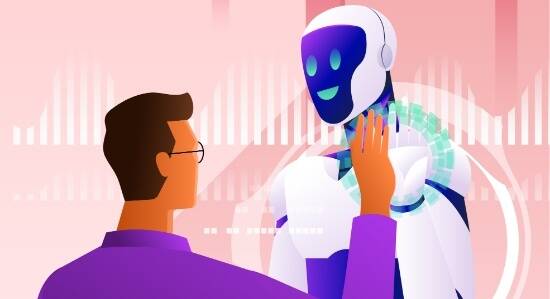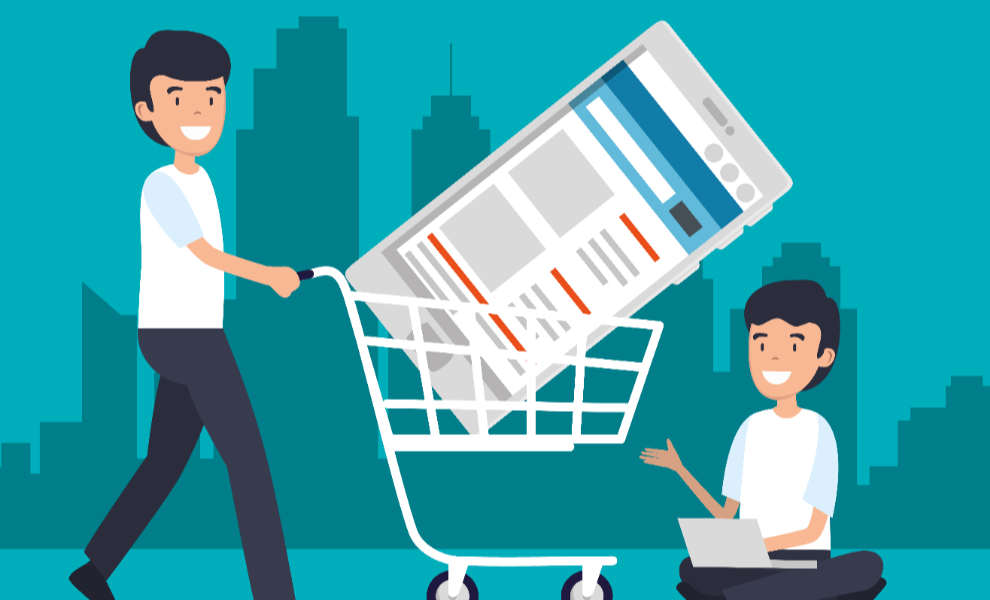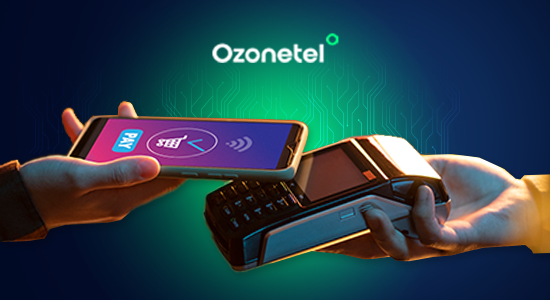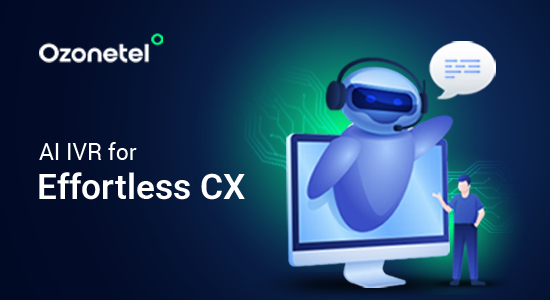- Resources
- What is Customer Loyalty? A Comprehensive Guide
What is Customer Loyalty? A Comprehensive Guide
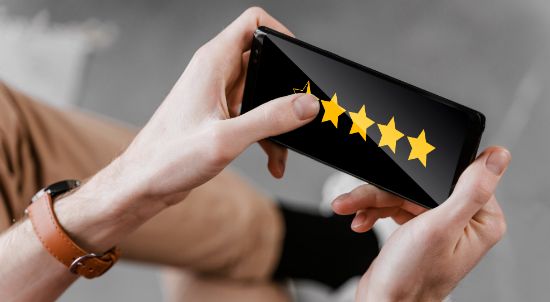
What makes a customer keep coming back to a brand? Is it the value they receive, the convenience they experience, the quality of service, or the emotional connection they feel? Customer loyalty is the culmination of all these factors and more.
At its core, it’s about consistently meeting and exceeding customer expectations. When a customer feels valued and appreciated, they are more likely to return. This means delivering on promises and providing seamless and enjoyable experiences every time they interact with your business. When customers know they can rely on a brand to solve their problems and listen to their feedback, their trust in the brand deepens. This trust is the foundation of loyalty.
Let’s understand what exactly is customer loyalty, and why is it so crucial? Read on as we explore the meaning of customer loyalty, its benefits, and the strategies you can implement to cultivate a loyal customer base.
In this article, we will explore:
- 1. Customer Loyalty Meaning
- 2. Importance of Customer Loyalty
- 3. Types of loyal customers
- 4. What is a Customer Loyalty Program?
- 5. Types of Customer Loyalty Programs
- 6. Customer Loyalty vs Customer Retention
- 7. How to Measure Customer Loyalty?
- 8. 7 Strategies for Increasing Customer Loyalty
- 9. Customer Loyalty vs Brand Loyalty
- 10. Examples of Best Customer Loyalty Program
- 11. Difference Between B2B and B2C Customer Loyalty
- 12. How Can Ozonetel Help?
Customer Loyalty Meaning
Customer loyalty is all about that special bond between your business and the customer. It’s an invaluable connection that can’t be matched by delivering a good product or service. True loyalty goes far deeper than just a transactional exchange. It’s the stuff that creates brand devotion and lifelong commitment from customers.
What makes a customer truly loyal? It’s their emotional connection, where their experience is enriched beyond the basics, and their needs are met and anticipated. Loyal customers are far more likely to use your product or service because they find genuine value.
The purpose of customer loyalty isn’t just to keep existing customers. It’s to help attract new ones – because a loyal customer will become an advocate for your brand. You’ll drive greater engagement and expand your reach to new customers through the word-of-mouth power of existing loyal ones.
Importance of Customer Loyalty
When satisfied with your products or services, customers become your brand advocates, spreading positive word-of-mouth and attracting new customers organically. This, in turn, reduces your marketing costs and increases your bottom line. But that’s just the tip of the iceberg. Customer loyalty offers numerous other benefits, including:
- Cost-effective: Retaining an existing customer is significantly cheaper than acquiring a new one. In fact, studies show that it can cost up to five times more to attract a new customer than to satisfy an existing one. Isn’t that mind-boggling?
- Increased revenue: According to reports, 43% of U.S. customers spend more on the brands and companies they like. This means that by fostering customer loyalty, you’re retaining customers and increasing their lifetime value.
- Higher conversion rates: Existing customers have way higher conversion rates than new ones. While the average conversion rate for a loyal customer ranges between 60% and 70%, it’s only 5% to 20% for a new customer. Impressive, right?
- Boosted profits: Want to see your profits soar? Foster customer loyalty. Research shows that business profits can increase by 25% to 95% when customer retention rates are increased by just 5%.
- Brand advocacy: Loyal customers are your biggest advocates. Studies suggest that as many as 70% of consumers are more likely to recommend a brand with a good loyalty program.
Types of loyal customers
When it comes to customer loyalty, we have several categories. Each category features customers with distinct qualities that help you understand their loyalty. Some are more inclined to leave if a competitor offers a superior deal, even if it is lower in price, but others are devoted customers. Let us look at these categories:
- Emotional Loyalty: Emotionally loyal customers are devoted to your brand identity and values. They make repeat purchases out of a personal connection and positive sentiment rather than just a functional need.
- Engagement Loyalty – A step deeper, this occurs when customers actively interact and engage with your brand across multiple channels such as email, website, and social media platforms, among others. It signifies interest beyond just transactions and lays the groundwork for forging real connections.
- Transactional Loyalty – This basic level stems from customers rationally evaluating your product/service value and sticking around purely for functional benefits and incentives like discounts or rewards points. There’s no emotional attachment driving their patronage.
- Behavioral Loyalty – When you can start influencing and changing customer behaviors through smart initiatives and communications. For example, nudging product trials, incentivizing key buying periods, and optimizing their journey based on perceived patterns.
- Advocacy Loyalty – These customers don’t just buy from you – they actively recruit others by voluntarily promoting your brand through word-of-mouth referrals, user-generated content, speaking engagements, and more. They’re your biggest competitive advantage.
What is a Customer Loyalty Program?
And customers are increasingly participating in loyalty programs- according to reports, 77% of consumers belong to up to five different loyalty programs. Even more notably, 93% say they actively earned or redeemed rewards from one of those programs within the past six months alone.
But what exactly is this program? A customer loyalty program is a strategic initiative to incentivize and reward your most valuable customers for their continued patronage and brand advocacy. Simply put, it’s a way for businesses to show appreciation for those who exhibit loyalty by continuously choosing their products or services over the competition.
These programs offer a diverse array of potential rewards – free merchandise, exclusive access to new launches, special discounts or pricing, enhanced customer service benefits like expedited shipping, and much more. The types of perks provided aim to create a VIP experience that cultivates deeper emotional connections and habits around your brand.
How do customer loyalty programs work?
Most customer loyalty programs employ a Points-Based system to quantify and reward desired behaviors like purchases or engagement. Members accrue points based on defined criteria like total spending with each transaction or interaction. Once enough points accumulate, they can be redeemed for various rewards or perks.
Traditionally, these systems featured physical membership cards with barcodes or IDs that customers would present during each visit to log their activities. While some still use this model, more brands are taking their programs digital by allowing customers to provide an email, phone number, or account login to permanently associate their unique profile.
This ability to comprehensively track and attribute individual customer behaviors across channels is a great advantage. Not only can you quantify how much revenue a particular loyalty member drives through your repeat purchase metrics, but you can also analyze their trends, preferences, engagement patterns, and much more to optimize experiences and offers continually.
Types of Customer Loyalty Programs
Now, you have a good understanding of the importance of loyalty programs and how they work. But another key element to this is that there are multiple customer loyalty programs, each with its own pros and cons. So, how do you decide on which one to use? Here are some of the most common customer loyalty programs with examples to help you understand better.
Points Program
The most common approach is that points-based programs reward customers with a currency they can accumulate through purchases, eventually redeeming for discounts, freebies, or exclusive perks. The “spend more, earn more” model taps into humans’ innate desire for reward and achievement.

For example, look at the runaway success of Flipkart Plus in India – by simply awarding points (“SuperCoins”) on every transaction, they’ve activated over 30% of monthly buyers while increasing their average spend 5X. When designed thoughtfully with attainable yet aspirational rewards, points programs can be incredibly effective loyalty drivers.
Tiered Program
Tiered programs go a step further, introducing ascending status levels (e.g., Silver, Gold, Platinum) that give customers access to increasingly valuable perks. The appeal here is to give your finest customers a sense of achievement and exclusivity.

Sephora’s iconic Beauty Insider initiative is the perfect example of this. The loyalty program progressively rewards higher annual spending with enhanced perks like bonus gifts, personal shopping services, and VIP hotlines. For brands able to offer differentiated experiences, tiered programs provide aspirational goals that keep members engaged.
Value-Based Program
For companies looking to strengthen their brand purpose and societal impact, value-based loyalty can be a clever way to align incentives with customers’ values and ethics. Instead of just points or discounts, each purchase could translate to a charitable donation, exclusive access to sustainability initiatives, or other purpose-driven rewards that create emotional resonance. Tapping into your core customers’ beliefs and sense of identity is key.
Subscription-Based Programs
Taking a page from Amazon Prime’s playbook, paid subscription programs offer premium services, enhanced benefits, or other elevated experiences in exchange for an annual/monthly fee. In addition to the recurring revenue stream, they cultivate deep buy-in and habitual behavior.

However, clearing the initial paid hurdle requires a compelling and differentiated value proposition that justifies the expense. Subscription loyalty only works if the experiences delivered consistently exceed the cost.
Customer Loyalty vs Customer Retention
Customer loyalty refers to a customer’s emotional connection and commitment to a brand, leading to repeat purchases and brand advocacy. On the other hand, customer retention focuses on keeping existing customers engaged and continuing to purchase from the brand over time. Still confused? Here are a few more differences to help you get a better understanding:| Aspect | Customer Loyalty | Customer Retention |
|---|---|---|
| Definition | Emotional attachment and commitment to a brand | Ongoing engagement and repeat purchases over time |
| Focus | Building long-term emotional connections and advocacy | Preventing revenue loss by maintaining customer relationships |
| Key Strategies | Loyalty programs, personalized experiences, brand values | Customer service, retention programs, targeted offers |
| Indicators | Brand advocacy, repeat purchases, positive word-of-mouth | Low churn rate, repeat purchase rate, customer lifetime value |
| Objective | Create brand advocates and drive long-term loyalty | Keep customers from leaving and ensure ongoing sales |
| Customer Sentiment | High engagement and positive preference for the brand | Indifferent or neutral feelings towards the brand |
| Customer Behavior | Actively refers others, forgives occasional mistakes | Continues purchases but may switch if a better offer arises |
| Scalability | Varies in degrees of loyalty (scalable) | Binary (either retained or not) |
| Impact on Business | Upselling, cross-selling, and increased advocacy | Steady revenue from repeat purchases |
How to Measure Customer Loyalty?
According to statistics, 86% of B2B firms do not monitor the ROI of their customer experience (CX), and 47% do not track upsells, cross-sells, or other customer loyalty measures. Why does this matter?
To gain a comprehensive picture of loyalty, it’s not enough to look at your customer retention rates or percentage of repeat buyers. Those are just topline numbers that don’t provide the context and insights needed to nurture loyalty actively over time. So, how do you effectively measure customer loyalty? By keeping track of the following metrics:
Customer Lifetime Value
This metric cuts straight to the bottom line by showing you the total revenue and profit generated by your relationship with each customer over their lifetime. Calculating customer lifetime value (CLV) gives you a direct view of which customer segments are most valuable and loyal. Aim for a CLV at least 3X higher than your customer acquisition costs to identify your most lucrative, sticky customer bases to double down on.
Monetized Net Promoter Score
While traditional NPS sheds light on customer sentiment and brand enthusiasm, monetized NPS takes it a step further by quantifying how positive (promoter) vs negative (detractor) customer experiences are impacting your revenue up or down. This illuminates the direct ROI of your CX efforts while highlighting areas for experience improvement to boost financial results.
Customer Engagement Metrics
The more engaged a customer is across your channels and touchpoints, the more ingrained loyalty becomes. Track engagement indicators like email open/click rates, app/website activity, social media interactions, survey response rates, support ticket volume, and more. Low engagement is often an early warning sign of churn risk, while high engagement equates to stronger retention and cross-sell/upsell potential.
Customer Satisfaction
Regularly pulsing customer satisfaction (CSAT) through post-interaction surveys provides a real-time read on experience quality and potential churn risks. But simply looking at CSAT scores alone isn’t enough – you need to pair them with open-ended “driver” questions that shed light on the root causes behind high or low satisfaction to properly diagnose issues.
Upsell/Cross-Sell Rates
Loyal customers show dedication by continuously expanding their investment in your product/service ecosystem. Tracking upsells and cross-sell ratios shows which segments are most receptive to taking their business further, a powerful gauge of overall enthusiasm and stickiness with your brand.
7 Strategies for Increasing Customer Loyalty
Regarding business success, a few things are as important as cultivating loyal customers. After all, repeat customers spend more, refer others, and provide invaluable feedback. But in such a crowded marketplace, earning true loyalty requires going above and beyond. Are you doing enough to keep your customers coming back? No? Well, here are some strategies that you can use to change this:
Ask for Reviews
Reviews are powerful social proof that can make or break buying decisions. Proactively collecting positive reviews demonstrates confidence in your products/services and turns happy customers into vocal brand advocates. But don’t just ask – incentivize with discounts or other perks. And be sure to respond to all reviews, good and bad. This shows you value feedback as an opportunity to improve while publicly showcasing your responsiveness.
Personalize the Experience
The generic, one-size-fits-all experience doesn’t cut it anymore. Instead, leveraging data to personalize and tailor interactions to each customer’s preferences and past behaviors is now table stakes. Use purchase histories, CRM data, browsing activity, and more to shape unique product recommendations, messaging, channel outreach, and overall experiences that make each person feel truly understood and valued as an individual.
Foster Emotional Connection
While factors like quality and value still matter, emotional drivers like trust, belonging, and feeling “seen” play an increasingly pivotal role in cultivating true brand devotion. You must get customers emotionally invested through authenticity, transparency, data protection, and designing experiences that tap into shared human experiences and values. Earn their trust through actions over words. Respond empathetically to their needs and pain points. Connect on a deeper level.
Reward Loyal Behavior
Simple rewards programs that deliver discounts, freebies, or other perks in exchange for recurring purchases can be a powerful incentive and show appreciation. Not only do they encourage customers to keep coming back, but they underline that you truly value loyalty, not just transactions. When customers feel genuinely rewarded for their repeat business, they are far more likely to remain devoted for the long haul.
Prioritize Engagement
For a relationship to thrive, it requires consistent, two-way engagement. So, don’t just transact – create communities, share entertaining content, host events, polls, and Q&As, and encourage open dialogue on the customer’s preferred channels. Find creative ways to spark conversations and keep your brand top-of-mind even when they aren’t actively buying. When you succeed in fostering human-to-human connections and keeping buyers engaged, loyalty follows.
Speak Their Language
Using industry jargon or overly formal corporate-speak instantly creates distance. However, adopting your customers’ familiar vocabulary and communication styles cultivates a welcoming, personal experience that helps them feel at home with your brand. Observe how they discuss your offerings and pain points – then mirror that vocabulary and casual tone in website copy, marketing, support interactions, and more.
Deliver Exceptional Customer Service
Customer service represents a make-or-break factor for earning lasting loyalty. Even the smallest issues, if handled poorly, can undo years of goodwill and positive brand sentiment. But you create powerful brand ambassadors when you equip your teams to provide responsive, empathetic, and skillful service that resolves complaints swiftly and exceeds expectations at every turn. Invest in comprehensive training, accessible support channels, and a customer-centric culture that treats every interaction as an opportunity to strengthen loyalty.
Customer Loyalty vs Brand Loyalty
Understanding the difference between customer and brand loyalty will help you effectively tailor your strategies and foster lasting relationships with your customers. While both are essential for long-term success, they require different approaches and satisfy distinct customer motivations.
Customer loyalty revolves around tangible rewards and incentives directly influencing customer spending habits. By offering competitive pricing, attractive discounts, or rewards programs, businesses can incentivize customers to continue purchasing their products or services. This type of loyalty is often driven by transactional benefits, making it necessary to continually invest in promotions and loyalty programs to maintain customer engagement.
On the other hand, brand loyalty is rooted in emotional connections and perceptions of quality, trustworthiness, and reliability. Customers with brand loyalty are less influenced by pricing and more likely to remain loyal even when competitors offer better deals. Their loyalty stems from a deep-seated belief in the brand’s values, reputation, and overall experience. While brand-loyal customers may not make as many purchases, the profit margins on their purchases tend to be higher.
Examples of Best Customer Loyalty Program
Companies across various industries have developed innovative loyalty programs that reward customers and enhance their overall experience with the brand. These programs often incorporate personalization, convenience, and value elements, setting them apart from the competition.
Below, we explore some of the best examples of customer loyalty programs that have successfully fostered strong customer relationships and driven business growth.
Uber Rewards
Uber’s loyalty program, Uber Rewards, exemplifies how a well-designed program can foster customer loyalty in a highly competitive industry like ride sharing. By offering a points-based system where customers earn rewards for every dollar spent on rides and UberEats orders, Uber incentivizes repeat business and encourages customers to prioritize their services.
- The program’s tiered structure, with higher membership levels unlocking additional benefits like priority pickup and flexible cancellations, creates a sense of exclusivity and accomplishment for loyal customers.
- Uber rewards frequent users and provides them with a better overall experience through perks like time-saving features and added flexibility, ensuring customer satisfaction and retention.

Starbucks® Rewards
Starbucks® Rewards stands out as one of the most successful customer loyalty programs, boasting over 40 million members. Its simplicity and versatility have contributed significantly to its widespread adoption and effectiveness in fostering customer loyalty.
- Customers earn “stars” (points) for every purchase made through the Starbucks app, which can be redeemed for free drinks, food, merchandise, and even exclusive contests and games, providing diverse incentives.
- By expanding the redemption options beyond just coffee, Starbucks keeps the program fresh and appealing to a broader customer base, encouraging continued engagement and loyalty.
- The program’s integration with the Starbucks app streamlines the earning and redemption process and allows the company to gather valuable customer data, enabling more personalized rewards and targeted marketing efforts.

Sephora: Beauty Insider
Sephora’s Beauty Insider program exemplifies how a well-executed loyalty program can create a strong emotional connection between customers and the brand, fostering long-term loyalty and advocacy.
- Customers earn points for every purchase, which can be redeemed for personalized rewards like samples or exclusive merchandise, allowing them to tailor the program to their preferences.
- The Beauty Insider Community, an online platform for beauty enthusiasts to share tips and discuss products, adds a social aspect and fosters a sense of belonging, further strengthening the bond between customers and the brand.
- The program’s tiered structure, with higher tiers offering better rewards and exclusive access to events and sales, incentivizes customers to increase their spending and engagement with the brand over time.

Difference Between B2B and B2C Customer Loyalty
Customer loyalty is a key component for the success of any business. Still, the strategies and tactics to achieve it can vary significantly between business-to-business (B2B) and business-to-consumer (B2C) models. B2B programs thrive on building long-term, value-driven partnerships, often through more formal and structured interactions. In contrast, B2C programs aim to foster an emotional connection with consumers, leveraging more informal and frequent engagement methods.
Let’s understand these differences in more detail:
| Point of Basis | B2B Customer Loyalty | B2C Customer Loyalty |
|---|---|---|
| Target Audience | Businesses, with rewards tailored to business needs (e.g., discounts on products/services, free shipping) | Individual consumers, with rewards geared towards personal preferences and needs |
| Focus | Long-term partnerships and repeat business | Positive brand experience and customer engagement |
| Customer Journey | Longer and more complex, involving multiple decision-makers and requiring detailed information | Shorter and simpler, driven by emotional and personal factors |
| Customer Expectations | High-quality products/services, consistent performance, reliability, and tailored solutions | Convenience, personalization, relevance, and value |
| Customer Retention | Focus on long-term partnerships, delivering value-added services, and fostering loyalty programs/referrals | Focus on enhancing customer satisfaction, creating incentives for repeat purchases, and fostering loyalty |
| Customer Feedback | More direct and detailed feedback, often through formal methods like surveys and interviews | More indirect and general feedback, often through informal methods like social media and ratings |
| Loyalty Strategy | Rational and strategic approach focusing on value delivery, problem-solving, and trust-building | Emotional and creative approach focusing on creating experiences, fulfilling needs, and inspiring loyalty |
How Can Ozonetel Help?
Ozonetel’s CX solutions allow businesses to achieve exceptional customer loyalty by leveraging cutting-edge technology, actionable customer insights, and omnichannel support. The platform allows you to create an omnichannel experience, deploy chatbots, and analyze customer feedback to understand customer pain points and modify your strategy accordingly.
Let’s explore how Ozonetel’s solutions have helped companies such as RKS and BigBasket to boost customer loyalty and drive growth.
BigBasket
BigBasket, the e-grocery giant, faced the challenge of maintaining high customer loyalty amidst the rapidly evolving consumer preferences and fierce competition in the e-commerce space. To address this, they leveraged Ozonetel’s innovative solutions, resulting in a staggering 15 million monthly orders and an impressive 85% customer retention rate.
- Voice of the Customer: BigBasket extensively analyzed customer service data, surveys, and feedback captured by Ozonetel to gain a deep understanding of customer needs, preferences, and pain points.
- Omnichannel Support: Ozonetel enables BigBasket to provide seamless omnichannel support, ensuring customers can easily access assistance across multiple channels, including chat, email, voice calls, and social media platforms.
- Technological Innovation: By leveraging Ozonetel’s advanced technology, such as route optimization, intelligent planning, and advanced analytics, BigBasket empowered its agents with the tools they needed to provide efficient and reliable service.
Read the full case study here!
RKS Motors
SABOO RKS, a leading automobile dealer in Hyderabad, faced critical challenges in optimizing sales, improving services, and implementing quality control measures. They needed help with call connectivity issues, poor IVR functionality, and delays in following up with leads. To address these obstacles and enhance customer loyalty, they turned to Ozonetel’s unified CX platform, which provided a comprehensive solution.
- Seamless Connectivity: Ozonetel’s robust CCaaS solution ensured seamless call connectivity and intelligent call routing, resulting in a 50% uptick in conversions and a 33% reduction in Average Handle Time (AHT). Clear communication and minimized wait times elevated the overall customer experience.
- Efficient Lead Management: The deep integration between Ozonetel’s dialer and CRM (Zoho) eliminated manual data entry, maximizing agent productivity. RKS could now engage in 50% more conversations and increase conversions by a remarkable 45%, significantly boosting sales and nurturing customer loyalty.
- Quality Control: Ozonetel enabled RKS’s Quality Control team to gather detailed customer feedback by increasing conversation time by 2X. This valuable voice of customer insights allowed RKS to continuously improve their services, addressing customer pain points and fostering long-term loyalty.
Read the full case study here!
Conclusion
In conclusion, customer loyalty is not a magic trick – it is a commitment to building genuine customer relationships. By prioritizing exceptional experiences and implementing strategic programs, you can cultivate a loyal customer base that drives your business’s sustainable growth and success. Remember, loyal customers are your greatest asset – invest in them, and they’ll invest in you.
Want to see what Ozonetel can do for your company? Sign up today for a free 7-day trial.
Prashanth Kancherla
Chief Operating Officer, Ozonetel Communications
Over the past decade, Prashanth has worked with 3000+ customer experience and contact center leaders...
Chief Operating Officer, Ozonetel Communications
Over the past decade, Prashanth has worked with 3000+ customer experience and contact center leaders to comprehensively understand the need for effective and efficient customer communications at every step of their journey with a brand. Deeply embedded in today’s CCaaS ecosystem, he has been instrumental in Ozonetel's growth and contributed in various roles including product management, sales, and solution architecture.

